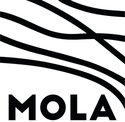Number 1 Poultry (ONE 94)
Museum of London Archaeology, 2013. https://doi.org/10.5284/1020244. How to cite using this DOI
Data copyright © Museum of London Archaeology unless otherwise stated
This work is licensed under the ADS Terms of Use and Access.
Primary contact
Julian
Hill
Post-Excavation Project Manager
Museum of London Archaeology
Mortimer Wheeler House
46 Eagle Wharf Road
London
N1 7ED
UK
Tel: 020 7410 2254
Resource identifiers
- ADS Collection: 1297
- DOI:https://doi.org/10.5284/1020244
- How to cite using this DOI
Introduction

The site of 1 Poultry is located near the Bank of England, in the heart of the City of London. During the 1990s, one of the largest excavations in the City recovered a remarkable archaeological sequence from the 1st to the 20th century AD. This was augmented by findings from nearby sites at Bucklersbury, Lothbury, Lombard Street, 72-75 Cheapside, 76-80 Cheapside, 36-37 King Street and Mansion House.
1 Poultry lies immediately west of the point where the main east-west road through Roman London bridged the Walbrook stream and uncovered an unparalleled sequence of buildings, roads, and open spaces. A timber drain of AD 47 beneath the main road is the earliest, securely dated structure yet known from Londinium, and a pottery shop, destroyed in the Boudican revolt, gives a snapshot of life in AD 60/61. A 2nd-century AD writing tablet preserves the only evidence for the sale of a slave found in Britain to date, while the 3rd- and 4th-century AD buildings on the site provide a rare demonstration of the continuities and changes that occurred in Roman urban life.
Poultry occupied a prominent position at the eastern end of Cheapside, the city's principal medieval market street; integrating documentary evidence with the archaeological record has provided an outstandingly detailed account of this area. Reoccupation of the site in the later 10th century AD began with the construction of scattered sunken-floored buildings; a more regular pattern of settlement, characterised by narrow-fronted timber buildings along the roadsides, had developed by the early 11th century. Occupation became progressively denser up to the 13th century, when large stone-built houses began to be constructed in previously open areas behind the street frontages. Metalworking evidence from the excavated buildings indicates early economic activity, corresponding with later documentary evidence for smiths, ironmongers and other metalworkers in the area. The Great Conduit, the City's first piped water supply, was established in the 13th century; its vaulted lower chamber survived at the junction of Bucklersbury and Cheapside.
This project was published following a joint venture between English Heritage and Museum of London Archaeology as:
- Hill, J. and Rowsome, P. 2011: Roman London and the Walbrook stream crossing: excavations at 1 Poultry and vicinity, City of London. MoLA Monograph Series 37.ISBN 978-1-907586-04-0.
- Burch, M., Treveil, P. with Keene,D. 2011: The development of early medieval and later Poultry and Cheapside: excavations at 1 Poultry and vicinity, City of London. MoLA Monograph Series 38. ISBN 978-1-901992-95-3.
- Miles, A., White, W. with Tankard, D. 2011: Burial at the site of the parish church of St Benet Sherehog before and after the Great Fire: excavations at 1 Poultry, City of London. MoLA Monograph Series 39. ISBN 978-1-901992-75-5.
More information on these publications can be obtained on the MoLA publications webpages.
Users of this archive may also be interested in the following articles within London Archaeologist:
- Peter Rowsome (1995) 'Number 1 Poultry - evaluation and Phase 1 excavations'. London Archaeologist 07:14, pp.371-7.
- Mark Burch, Julian Hill, Sarah Jones, Duncan Lees, Peter Rowsome, Phil Treveil (1997) 'Number 1 Poultry - the main excavation: Roman sequence'. London Archaeologist 08:05, pp.127-36.
- Phil Treveil, Peter Rowsome (1998) 'Number 1 Poultry -- the main excavation: late Saxon and medieval sequence'. London Archaeologist 08:11, pp.283-91.






